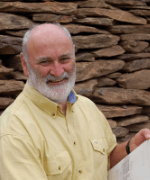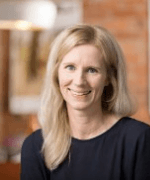Head to our Green roofs & walls page for more information about the benefits of green roofs, tips, resources and research – plus you can watch video highlights from this training.
In an increasingly dense urban form, green roofs and walls offer attractive green outdoor spaces that can deliver a cooler urban landscape and reduce stormwater run-off. This hands-on training will provide participants with knowledge and skills in the conceptual and detailed design of green roof and wall systems, including construction details and plant selection, via presentations, site visit and a group exercise.
Learning objective
The training will provide participants with knowledge and skills in the conceptual and detailed design of green roof and wall systems, including construction details and plant selection.
Who should attend?
Horticulturalists, landscape architects and designers, engineers and other professionals involved in the design, construction or approval of green roof and wall systems.
Presenters
- Graeme Hopkins, Fifth Creek Studio
- Amanda Balmer, WAX Design
- Warwick Keates, WAX Design
- Functional design to achieve multiple benefits including retention and at source re-use of stormwater; pollutant removal; ecological function; integrated design and aesthetics; cost effective maintenance and asset management; and improved human thermal comfort.
- Detailed design including:
- design objectives
- site context and orientation for solar, wind and other climatic conditions
- retention and at-source stormwater harvesting and re-use by passive irrigation or elsewhere within the building/surrounding landscape
- stormwater drainage, including sub-surface drains, inlet and outlet structures
- growing media specifications
- suitable plant species for green roofs and green walls for South Australian climatic conditions
- structural engineering considerations for buildings, e.g. weight loading of growing media etc.
- sites, contexts when green roofs, and green and living walls are not suitable design solutions
- safety considerations
- insurance considerations
- Construction and installation techniques for green roof, green walls and green facades
- Typical costs of construction and maintenance
- Maintenance regimes and cost implications
- Case studies over a range of scales and development types including:
- apartment blocks
- commercial
- detached dwellings
Learning activities
• Site visits Sanctuary Adelaide Zoo green roof/wall
• Group design exercise
Learning resources
• Presentation slides as handout
• Fact sheet: Green roofs
• Fact sheet: Living walls
Cost
- $300 + GST – Water Sensitive SA investment partners/corporate members
- $300 + GST – Stormwater SA, AILA, AIA Members, ASBN affiliates, BDAA
- $450 + GST – Non-partners
Your presenters

B Sc (Arch), B Arch, FAILA, Churchill Fellow
Graeme Hopkins is a retired Registered Landscape Architect and Registered Architect. He was principal of Fifth Creek Studio (FCS), and since the 1980s he has developed expertise in WSUD design and implementation, and the use of landscape strategies and natural systems within urban environments to provide climate change adaptation, with a particular focus on micro climate modification through the use of living architecture technologies such as green roofs and walls. He received a Churchill Fellowship in 2005 to study green roofs and walls overseas.
His book Living Architecture: Green roofs and walls (co-authored with Christine Goodwin) was published by CSIRO Publishing in mid-2011. Fifth Creek Studio was awarded the AILA South Australia Medal for Landscape Architecture 2012-13 for the book.
His research has been recognised by various government bodies throughout Australia, by engaging FCS to peer review and provide cutting edge research and information to their guidelines and documents. His 40 years of practice and strong research credentials gives him a balanced sustainable focus.

Amanda Balmer is a director at WAX Design and is focused on the creation of outstanding play and learning environments that respond to context, cultural values, deliver innovation and provide environmental sustainability. Amanda is continually delivering landscapes that become significant places for the future, packed full of meaning and memory. Education, play and sustainability are large components of Amanda’s project portfolio, working with numerous schools, children’s facilities and councils, to create learning and play environments which deliver engaging, interactive, informative and all accessible landscapes. These projects actively seek to engage the child in creative, imaginative and challenging play along with outdoor recreation, and promote the principles of risk benefit. Amanda Balmer is committed to excellence in play environment and educational landscape design and has developed a diverse wealth of knowledge that continually informs her design approach. People and place are at the forefront of all of her projects, and she is skilled in the creation of spaces that champion communities, the environment and most importantly, nature. Warwick is a director at WAX Design and a leader in place making and urban design, and has received several awards from AILA and PIA for his urban design projects. He believes in creating places where people are welcome. Warwick has presented several papers on the changing demands of open space within our cities, and the need to create places for everyone that are intergenerational and inter-cultural, as well as sustainable and inclusive. His work with the Department of Health and Wellbeing, Department of the Environment and Water and AILA in the development the Quality Green Open Space Principles as part of the Healthy Park Healthy People Programme, sets a new bench mark for open space planning and design in South Australia. Warwick has delivered numerous projects that focus on inclusion, activation and the integration of sustainability. His work on the Victor Harbor and Willunga mainstreets has been recognised as best practice urban design and place making successes. Warwick strove to embed principles of place, inclusion, and story-telling to create socially, physically and culturally accessible projects.






